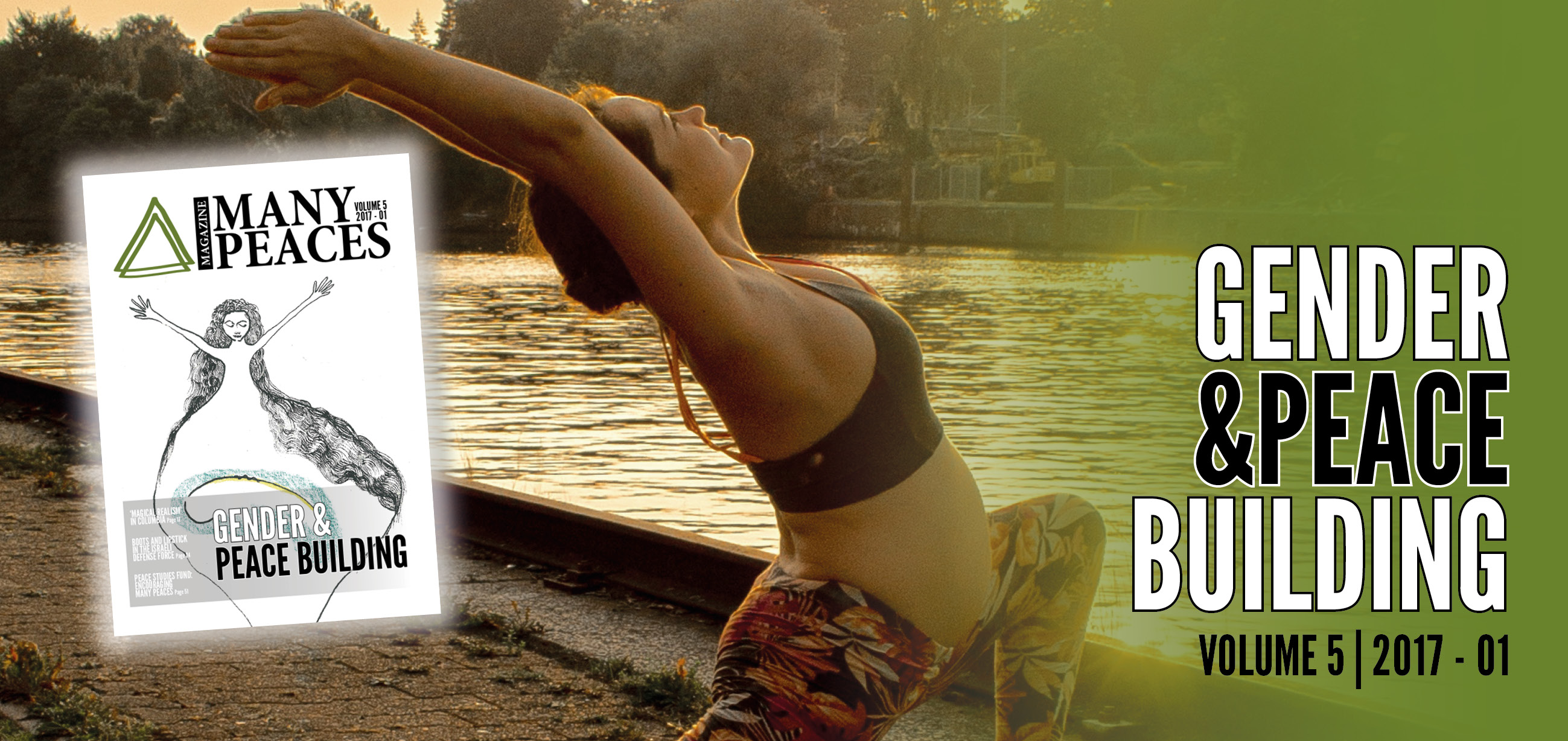Dear peace colleagues and friends,
This is the fifth edition of the Many Peaces Magazine, and as in all former editions, the team around this magazine, the authors and interview partners show how colourful and inspiring reflections about peaces in all their varieties can be. This only is the case, as the thinkers invite us readers to allow ourselves to go deeper than just looking at the obvious. Gender: hardly any topic is able to demonstrate in a better way that peace work does not start in the middle of war or conflict exclusively. It rather starts in our daily lives, and it influences our inner existences. Whoever we are, whatever we do, however peaceful we want to live – and whoever we dare to call “we” – the perception of gender is following us and outruns our intended behaviours.
I therefore consider it as natural that the editors decided to dedicate a volume to “gender and peace building.” Gender is not what one could call an easy topic to discuss, and yet it is the ideal one to celebrate the understanding of the “many” peaces. How human beings decide, how they/we think and act, all of that is connected to how we get seen and how we perceive ourselves. We are what the social constructs and judgments as well as our own awareness create. Thus, as soon as one imagines many peaces, rather than one single path for peace, one tends to detect the necessity to talk about marginalisation.
The authors of this volume approach gender from several different perspectives. What holds them together is the hope that transformation is possible and that it can only lead to many peaces, if it is accompanied by respect. With a glance at the history of peace studies and the various schools within it, one might consider it as astonishing that of all things, an article about pregnancy opens the readers’ minds for that kind of transformation. Christina Pauls shares thoughts and feelings about her pregnancy and demonstrates in a poetic way that peace work is far more than a project of peace building. It is a way of living and taking care with sensitivity. To live gender in this sense means to allow oneself to realise, to transform and to respect – also oneself. Those who feel this inner peace do not need to diminish and hurt their environment or those who are supposedly different. This is the special quality of the Many Peaces Magazine: each article besides its stories invites the readers to transform her- or himself.
Gender is also a dangerous topic for a magazine, because often the debate would start with apologising and lamenting the exclusions, always fearing that one has left out someone, some group or a detail, while the main topics of marginalisation go far deeper than that. Jana Hornberger teaches us to go into a more loving direction, when she talks about Elicitive Conflict Mapping (ECM) and the diverse masks and frames of a person; masks that may be triggered by circumstances and even more so by certain constructs. At the beginning of her article, Jana shows a very peaceful way out, when she quotes the Guatemalan feminist singer Rebeca Lane: I do not love you because of your sex but for the things we share.
Sonja Karbon on the other hand brings the discussion back to a level that so many girls and women still have to struggle with in their daily lives. The simple fact of menstruating makes a difference for their public appearance, acceptance, health issues and finally also education. Sonja points out well that for girls in many regions the lack of (gender-divided) toilets still means missing school several days a month, as the social construct would not allow it otherwise. The challenges for genderwise marginalised groups are still countless. Women can try to change them by connecting to each other, transgender groups can work together, and yet, any kind of marginalisation will only be weakened if all parts of the societies work together. This is just as true for men, as Adam Baird with his article about masculinities describes.
There is a lot of work ahead of us. Christina Egerter in her article calls it to travel “into new, unknown lands,” which reminds me of another staple that holds together the articles of this volume: the willingness to de-learn and to detect new possible paths. The mostly female authors set examples with their texts.
Gender as a peace building topic also calls for sustainability, because putting one woman in front or simply creating an additional word to complement “he & she” are first steps only that can disappear again. Gender as a term can remind us to keep on calling for justice, diversity, respect, and also the curiosity that forms the beginning of any reflection. I am looking forward to the discussions that this volume will trigger, and I wish you all inspiring moments with these wonderful texts.

